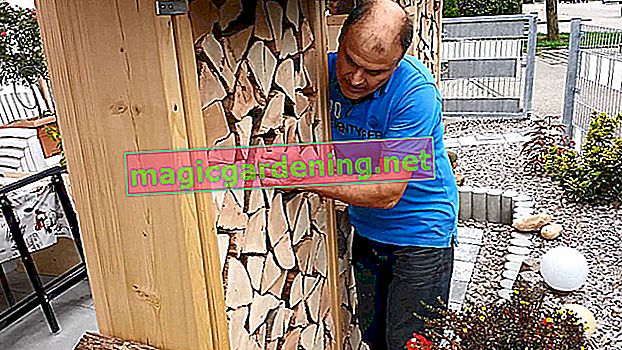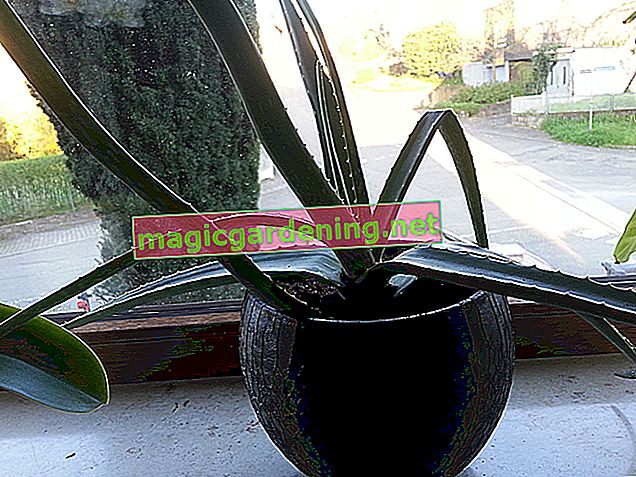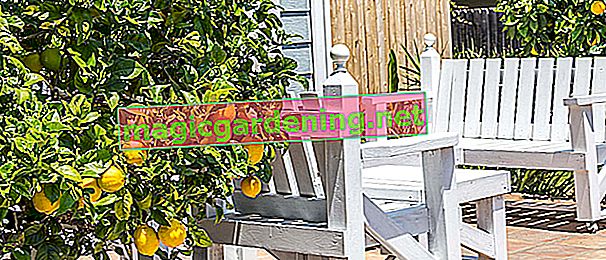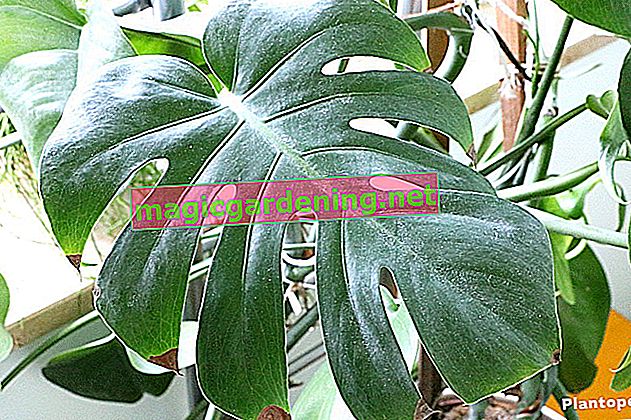
Plant the wisteria correctly
The wisteria always grows towards the light, that is, upwards, as long as this is possible. For this he needs a climbing aid, even if the plant is in the pot. However, it looks different if you want to grow the wisteria in the bucket as a high trunk. In both cases, the ideal planting time is spring.
also read
- How to care for a wisteria as a trunk - tips and tricks
- How to plant wisteria - tips and tricks
- How to care for a wisteria - tips and tricks
Choose a sufficiently large planter, it should be slightly larger than the previous pot and have a drainage hole in the bottom. Put a large piece of pottery on top so that the hole doesn't clog up quickly. Then fill in lime-free, more acidic soil with a high nutrient content. Put your wisteria in the pot and water it well. Then put your wisteria in a sunny spot.
Water and fertilize the wisteria properly
So that your wisteria is always well supplied even with the limited nutrient supply in the bucket, you should fertilize it regularly from spring to autumn. The water requirement varies depending on the temperature and is quite high, especially during the flowering period. Then daily watering is the order of the day.
Prune the wisteria properly
You should not only prune your wisteria twice a year to keep its overly lush and wild growth within limits. This cut back is particularly important in the pot or tub. The wisteria only blooms on old but short shoots. If you don't prune it, it will bloom less and less or not at all over the years. Then it's time for a radical cut.
Hibernate the wisteria well
The wisteria is considered hardy, but it absolutely needs winter protection in the bucket so that the roots don't freeze to death. Wrap the entire planter with an old blanket, jute sacks or fleece, also from below. Alternatively, you can overwinter the wisteria in the greenhouse. It should be cool there, but almost frost-free. The buds in particular are quite sensitive to frost.
The essentials in brief:
- Soil: nutrient-rich, well-drained, as free of lime as possible, rather acidic, slightly moist
- Plant and transplant in spring
- Create a drainage layer
- put in a sunny place
- fertilize and water regularly
- Hibernate in a cool but frost-free place or wrap everything around
Tips
Remember that wisteria is very poisonous before putting it on your balcony or patio. Do not let children play there unsupervised, especially while the tempting pods are ripening.








